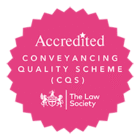Selling your house should be relatively straightforward but if your boundaries aren’t where they are recorded with the Land Registry as being – maybe because the boundaries have been extended or you have acquired land not mentioned on the deeds – this can “throw a spanner in the works” of what should have been a smooth process.
Adverse possession explained
“Adverse possession” refers to the situation in which someone occupies land belonging to someone else, without their permission. If someone does this continuously for a number of years then, in certain circumstances, the land may become theirs.
Adverse possession can arise in a number of situations. Occasionally a mistake may have arisen when the property was registered so that not all the land is transferred into your name. Or your garden may have been extended almost by accident or a boundary to land to the side of your property altered because there is no evidence of who owns it. Big gardens, driveways and even ponds are particularly attractive to home buyers and you will want to showcase every last square foot when selling. But if you don’t legally own the land it isn’t yours to sell on.
And if this situation comes to light after a sale of the property has been agreed this will cause a problem which could result in the sale being delayed – which may have implications if there is a linked purchase – or even falling through.
However even if the land doesn’t match up to the Land Registry’s records, it may be possible to become the legal owner by using the adverse possession rules.
What is the process of gaining ownership?
If you have occupied land for a certain number of years you can apply for adverse possession.
Different rules apply to adverse possession depending upon whether the land in question is registered or unregistered and when the possession took place. But in all cases you will need to prove:
– uninterrupted factual possession of the land for the required period
– the intention to possess the land during that period and
– possession without the owner’s consent
If the land is registered with the Land Registry you must show ten years adverse possession. If the land is unregistered you need to show 12 years adverse possession. The requisite period can be achieved by successive occupiers of the land.
An application is made to the Land Registry, supported by a statement setting out the circumstances in which the land came to be acquired, backed up by photographs or any other evidence to prove how long you been in possession of the land. Upon receipt of this the Land Registry will send a surveyor to look at the land to see if it looks as though, on the face of it, you have a good case.
If the Land Registry considers the application is reasonable they will then send out notices to the registered owner of the land (if it is registered) or any person they believe may have an interest in the land (if unregistered). If no response is received by the Land Registry after 65 business days (for registered land) or 15 business days (for unregistered) the applicant will be registered as owning the land.
If an objection is received then the Land Registry will consider whether there is any merit in the objection. If not, again they will register the applicant as owner.
An application for registration based on adverse possession can be made at any time. Do remember, however, that the process does take time and so it is far better – and safer – to start the process in advance of your property going on the market.
How can we help?
WHN has many years’ experience at dealing with adverse possession claims. If you think you may be in this type of situation, the first step is to check the registered boundaries. This is something we can assist you with. If that shows that you are not registered as owning the whole of the land you occupy then we can deal with the adverse possession process from start to finish. Simply call 01706 213356 or email catherine.hamilton@whnsolicitors.co.uk














